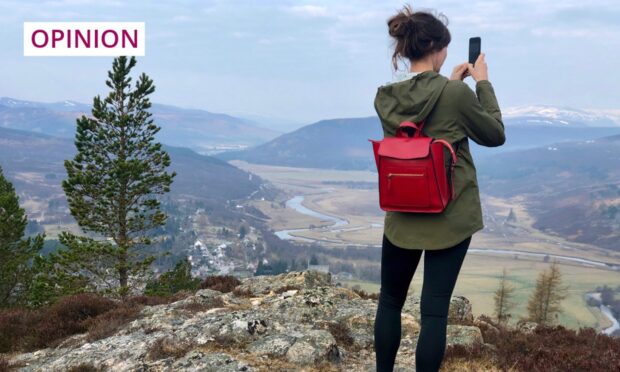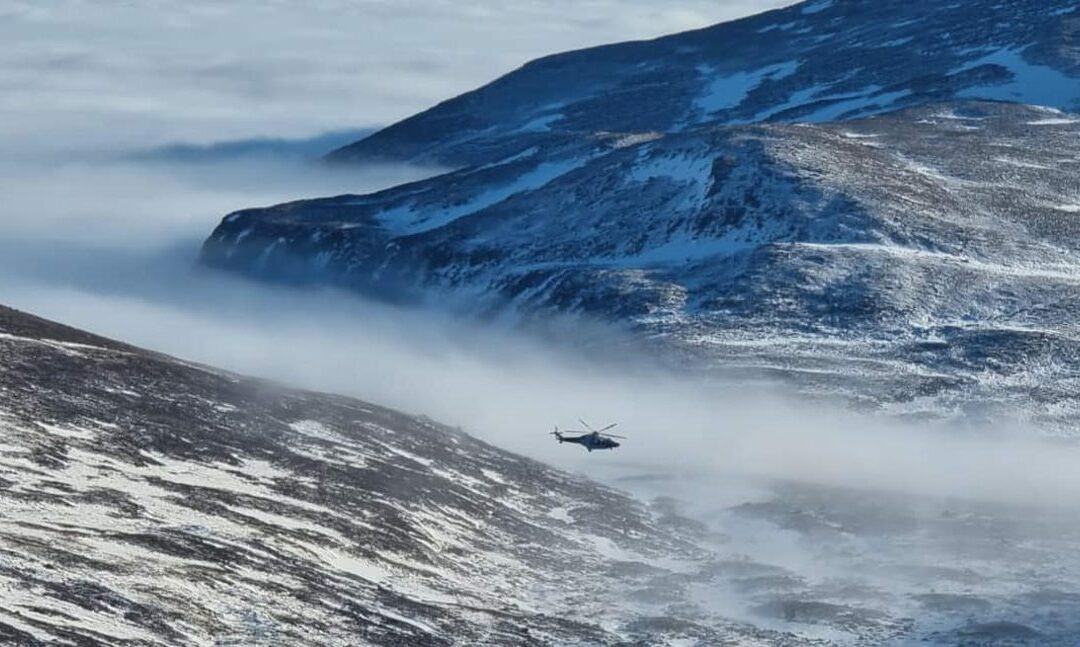For reasons I don’t fully understand, Facebook recently decided that I might enjoy Irish landscape photos.
I probably just lingered over a random picture whilst scrolling, pausing to appreciate the beauty before mindlessly moving on. But that’s all the justification Facebook needs, it seems.
I didn’t mind too much, to be honest. I’ve never visited Ireland, so enjoyed the insight.
Eventually, a photo popped up, posted by a page promoting Irish tourism, showing an ancient hill fort above a misty landscape. In the background were the most remarkable, verdant, steep hills. And on the horizon were jagged coastal mountains, like something from Norway. It was beautiful.
“But… That’s not Ireland,” I thought.
True, I’ve never been there, but something wasn’t right. The patchwork fields were at preposterous gradients on the hillsides, such that when I imagined farmers farming them, I couldn’t do so without seeing their tractors flipping over backwards, and their cows rolling comically down the slopes.
And, yet, all the component parts of the landscape looked plausibly Irish – the colours, the pattern of arable fields and moorland, the scattered villages, the light, the moody weather.
Curious, I Googled the hill fort. Within 20 seconds, I’d found what appeared to be an identical view, albeit… flatter. It was still a beautiful scene, just with low, whaleback hills familiar to anyone in Scotland or Ireland, rather than mountains imported direct from the Norwegian fjords.
Comparing the two, it was clearly exactly the same photo, but the first one (and especially the top half of it) had been stretched to increase the gradients.
I felt bad for all the people being taken in
It really bugged me, but I’m not entirely sure why. Was it the fact that someone had felt the need to adjust the image in the first place, to somehow “improve” upon it? Not simple tinkering, but rather a wholesale adjustment, as if the real beauty of Ireland wasn’t beauty enough.
Was it the fact that the 200 or so adoring comments beneath the photo (many of them clearly from people living in Ireland, and some even from folk who had visited the site) were apparently oblivious to the manipulation?
“Beautiful line and form and a joy to see,” said one.
“I wish it looked like that the day I was last there,” remarked another, without irony.
“Can’t wait to see this view for myself!”
I did wonder whether that last person would be disappointed when they finally did see that view for themselves.
Ultimately, I think I felt bad for all the people liking, sharing and commenting, because it was akin to being lied to. And this from a page that specialises in promoting Irish culture and landscapes.
I imagine they probably found the pic somewhere, thought it was lovely, and weren’t even aware it wasn’t real. So, I posted the link to the original untampered image and said: “Erm… Lovely photo, but shouldn’t it look like this?” Nobody replied.
Since then, I’ve noticed this “stretching” effect used elsewhere, notably on a holiday website from Skye. You’d think the Cuillin range and the Quiraing, as some of our most extreme mountainous and craggy landscapes, wouldn’t need stretching to draw our attention. But, yep, apparently they do.
Sharing without question or context
Manipulation of photos is nothing new, of course. It’s as old as photography itself. As early as the 1850s, people were doing it manually with ink or scratching, while others exposed multiple images on the same negative to make composites of scenes that didn’t otherwise exist.
Truth be told, I often manipulate photos to adjust their brightness, sharpness or vibrancy. I occasionally remove lens flare and straighten my wonky horizons. At my most interventionist, I might remove a rock or a tuft of grass because it doesn’t quite fit the other qualities of a scene I am trying to convey.
So, I certainly don’t have a problem with adjusting images; I just think it’s nice to be upfront about what you’ve done and why. Then, anyone seeing it can come at it from the right viewpoint.
I suspect what has happened here, though, is that someone has adjusted an existing, well-known image for fun, playing around on Photoshop, and they’ve posted it online, with or without explanation. Thereafter, it has been shared by a tourism page with a modest 2,600 followers, completely out of context, and apparently oblivious to the manipulation. It’s then been shared by Museum of Artifacts – a Facebook page with one million followers – without question and, again, without context.
On and on it goes. And, before you know it, Ireland is famous worldwide for its Norwegian-style landscapes. Nobody is questioning it and, if these particular Facebook pages were anything to go by, people are already adding the hill fort vista to their bucket lists and planning holidays to Ireland.
It’s baffling.
Then again, maybe it’s a stroke of genius from the local tourist board.
Ben Dolphin is an outdoors enthusiast, countryside ranger and former president of Ramblers Scotland


Conversation